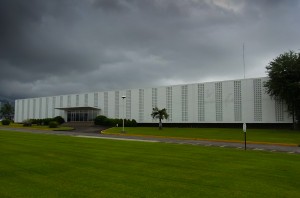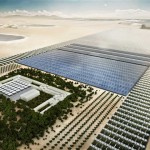Search Results for Tag: food
Ban on plastic bags?
“Fifty years ago, the single-use plastic bag was almost unheard of. Now we use them for a few minutes and they pollute our environment for decades,” says Janez Potocnik, Environment Commissioner of the the European Union. Each European uses 500 of these bags each year, most of them are used just once. In 2008 alone a total of 3.4 million tonnes of plastic bags were produced in Europe, that makes the same weight as two million cars.
Starting this week (18. May) the European Commission is seeking a solution. The approach is planed to be made with the help of European people and the bags manufacturers. The Commission calls everyone to a online-poll. Finally a tax or a ban on plastic bags is considered. The Commission called for suggestions on how to deal with the billions of bags used in the European Union each year. The public consultation will close at the end of August.
Frankenstein meat to curb climate change?
 Between the emission of methane (which traps more heat than CO2), deforestation for animal feed production, loss of biodiversity due to eutrophication, acidification, pesticides and herbicides as well as land degradation, 'factory farming' (the method through which most of the world's meat is produced) is considered more an earth pollutant than vehicles.
Between the emission of methane (which traps more heat than CO2), deforestation for animal feed production, loss of biodiversity due to eutrophication, acidification, pesticides and herbicides as well as land degradation, 'factory farming' (the method through which most of the world's meat is produced) is considered more an earth pollutant than vehicles.
Scientists at the Medical University of South Carolina are now hoping these environmental concerns will lead to more funding for what they consider the food of the future: lab grown meat. The scientists have taken embryonic cells that develop into muscle tissue from turkey and bathed them in a nutrient bath of bovine serum on a scaffold made of chitosam to grow animal skeletal muscle tissue. In order to make the meat juicy, they are adding a vascular system so that interior cells can receive oxygen. The scientists say this will take the need for feed out of the equation as well as stop the clearing of land for the factory farms.
The scientist in charge of the product plans on calling the resulting food 'charlem' for Charleston engineeered meat. It's a thought that almost makes you want to become vegetarian.
(jhoff)
(Photo by ogondio)
Abandoned wonders
Our reporter Carl Gierstorfer has finished filming for his upcoming report on sustainable rice crops in the Philippines. Read his latest post from the field:
"The Filipinos call them the 8th world wonder, UNESCO lists them as a world heritage site: the rice terraces of the Cordillera mountains in northern Luzon. The Ifugao people started to carve them into the hillsides 2000 years ago, at a time when iron hadn't been discovered in their part of the world. Instead they used hardwoods collected in the forests; they built complex irrigation systems and transformed these mountainous forests into a rice growing region.
One cannot stop wondering about why the Ifugao people, apparently feared headhunters, took so much effort to grow rice. Were the forests hunted empty? Was it prestigious to grow rice? What's for sure is that the climate here, even in the present cooler and drier season, is not pleasant. It's damp, wet, and pretty cold at night. The terraces are still farmed today, the plots of land handed down the generations. It is tough work. During the rainy season landslides destroy many rice paddies. Small wonder, then, that more and more of the fields are being abandoned; young people move to the cities, get jobs in the tourism industry. After all, it takes almost a year's work to harvest rice that will last for only a few months. As spectacular as these rice terraces are, there is nothing romantic about farming them. One can only hope that after 2000 years there will be at least some people left who will maintain this 8th wonder of the world.
We have finished filming and head back to Manila. There is lots of material – so now it's all about choosing the most interesting bits for the report."
Jordan’s Green Machine
Jordan's government has approved a revolutionary new green project that could transform the country's desert into a green oasis and provide basic necessities like food and water to boot. An environmental technology group called the 'Sahara Forest Project' is creating a massive facility in the desert city of Aqba that promises to turn transform sun and seawater into food, energy and clean drinking water.
And to top it all off, the facility could combat climate change too by pulling in large amounts of carbon dioxide from the atmosphere. An MSN article on the project describes more of the details, including how the solar power plant and the greenhouse system will work.
The facility in Aqba will actually be a demo plant so developers can see how it works before creating more. And it could be up and running as early as 2012. Is this the way of the future for desert landscapes? Would this kind of project work in your country?
Feeding the world in a changing climate
Here is the second dispatch from our reporter Carl Gierstorfer, presently filming on location in the Philippines:
"Second day shooting at the International Rice Research Institute (IRRI). Anyone talking about world food security cannot ignore IRRI's contribution. Many popular strains of rice, grown on millions of hectares, have been bred here. IRRI was founded half a century ago. But maybe its real challenges lie ahead. Until 2050 another three to four billion people need to be fed. The majority of them on rice. With less resources, an unpredictable climate, and not much more land.
Yet still, scientists here are optimistic: they think they can meet the challenges. Meet Sigrid Heuer, a German molecular biologist. She worked on a team that bred Sub-1, a strain of rice that can survive flash floods, which are expected to become more common due to climate change. Mining IRRI's seed bank, with more than 125,000 varieties, never disappoints the scientists. In the cold archives, there are long forgotten strains; rejected because they were not tasty enough, or had too little yield. But these loners might just have that special trait required in the future – like surviving underwater for two weeks. Or tolerating salty conditions. Scientists like Heuer look for these varieties; they isolate useful traits and breed them into popular strains. Sub-1 is simply Asia's most favorite variety with a gene that allows it to survive heavy floods.
IRRI is a little world in itself. More than 800 people work here; buildings and fields are spread out over a wide area; a settlement with its own fire fighters and strange 1950s architecture. I had a stroll around at night – have a look at the pictures. And, yes, alcohol is forbidden here. Some of IRRI's founders apparently were Quakers…"











Feedback